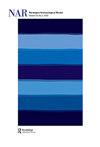Children and Rock Art: A Case Study from Western Arnhem Land, Australia
IF 1.1
3区 历史学
0 ARCHAEOLOGY
引用次数: 9
Abstract
In this paper, we explore the social context of rock art creation through the lens of one woman’s childhood experiences in, what is now, Kakadu National Park in the Northern Territory of Australia. We reflect upon oral history interviews conducted over the last three years with Warrdjak Senior Traditional Owner Josie Gumbuwa Maralngurra and her childhood spent walking country with family. As a witness to vast numbers of rock paintings being created, and sometimes an active participant in that process, Josie’s memories provide rare insights into the social and cultural context of rock art practices during the late 1950s and early 1960s. We argue that Josie’s personal experiences provide solid evidence for both the educational role that rock art continued to play across the region during the 20th century and its role as a tool for helping to ensure intergenerational connection to country.儿童与摇滚艺术:澳大利亚西阿纳姆地区的个案研究
在本文中,我们通过一位妇女在澳大利亚北领地卡卡杜国家公园(Kakadu National Park)的童年经历来探索岩石艺术创作的社会背景。我们回顾了过去三年对Warrdjak资深传统所有者Josie Gumbuwa Maralngurra进行的口述历史采访,以及她与家人一起在乡村散步的童年。作为大量岩画创作的见证者,有时也是这个过程的积极参与者,乔西的记忆提供了对20世纪50年代末和60年代初岩石艺术实践的社会和文化背景的罕见见解。我们认为,乔西的个人经历为岩石艺术在20世纪继续在该地区发挥教育作用以及作为帮助确保与国家的代际联系的工具的作用提供了坚实的证据。
本文章由计算机程序翻译,如有差异,请以英文原文为准。
求助全文
约1分钟内获得全文
求助全文
来源期刊

Norwegian Archaeological Review
ARCHAEOLOGY-
CiteScore
2.10
自引率
0.00%
发文量
13
期刊介绍:
Norwegian Archaeological Review published since 1968, aims to be an interface between archaeological research in the Nordic countries and global archaeological trends, a meeting ground for current discussion of theoretical and methodical problems on an international scientific level. The main focus is on the European area, but discussions based upon results from other parts of the world are also welcomed. The comments of specialists, along with the author"s reply, are given as an addendum to selected articles. The Journal is also receptive to uninvited opinions and comments on a wider scope of archaeological themes, e.g. articles in Norwegian Archaeological Review or other journals, monographies, conferences.
 求助内容:
求助内容: 应助结果提醒方式:
应助结果提醒方式:


